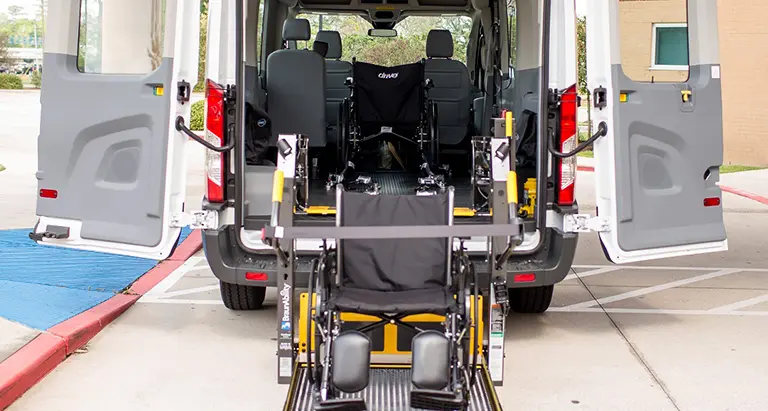Business
The Importance of Efficient Routing for Non-Emergency Medical Transportation

Non-emergency medical transportation (NEMT) plays a critical role in the healthcare industry, providing transportation for individuals who require medical care but do not need emergency services. For NEMT providers, efficient routing is essential to ensure that patients receive timely and cost-effective transportation services. In this article, we will discuss the importance of efficient routing for NEMT services, factors affecting efficient routing, and strategies for optimizing NEMT routing.
Benefits of Efficient Routing for NEMT Services
Efficient routing can bring several benefits for NEMT providers, including:
- Reducing wait times for patients: NEMT providers can optimize their routes to minimize the time it takes to pick up and drop off patients, ensuring that patients arrive at their appointments on time.
- Increasing productivity and efficiency for providers: By optimizing their routes, providers can reduce the amount of time that their vehicles spend on the road, which can help to reduce fuel costs and vehicle wear and tear. It can also allow providers to serve more patients in a shorter amount of time, which can increase their revenue and profitability.
- Improving cost-effectiveness: By reducing the amount of time that their vehicles spend on the road, providers can reduce their labor costs and fuel expenses. This can help to improve their bottom line and ensure that they are providing affordable services to their patients.
Factors Affecting Efficient Routing
Several factors can affect the efficiency of NEMT routing, including:
- Geographic location and service area: The location and size of the service area can affect the efficiency of NEMT routing. For example, providers in rural areas may have to travel longer distances between patients, while providers in urban areas may have to deal with traffic congestion and parking restrictions.
- Patient needs and preferences: Patients may have specific needs and preferences that must be taken into account when routing vehicles. For example, patients with mobility issues may require special vehicles, while patients with specific medical conditions may need to be transported on specific routes.
- Time and scheduling constraints: Time and scheduling constraints can also affect routing efficiency. Providers may need to schedule trips during specific hours to ensure that patients arrive at their appointments on time.
- Traffic and weather conditions: Traffic and weather conditions can affect the efficiency of NEMT routing. Providers may need to adjust their routes in real-time to avoid traffic congestion or bad weather conditions.
Strategies for Optimizing NEMT Routing
There are several strategies that NEMT providers can use to optimize their routing, including:
- Using NEMT software: NEMT software can help providers identify the most efficient routes based on traffic patterns, patient needs, and other factors. It can also help providers to track their vehicles in real time, which can help them to make adjustments on the fly if necessary.
- Creating custom routes based on patient needs and preferences: Providers can create customized routes based on patient needs and preferences. For example, if a patient requires a specific type of vehicle or has mobility issues, providers can create a customized route that takes these factors into account.
- Implementing real-time traffic monitoring: Providers can use real-time traffic data to identify congestion and delays on their routes and adjust their routing accordingly. This can help to ensure that patients arrive at their appointments on time, even if there is unexpected traffic.
- Scheduling and dispatching based on traffic patterns and expected delays: Providers can schedule trips during off-peak hours and avoid congested areas to optimize their routes and reduce wait times for patients.
Case Studies: Examples of Efficient NEMT Routing
Here are two case studies that demonstrate the benefits of efficient NEMT routing:
- Case study 1: A large NEMT provider in an urban area used mapping and routing software to optimize its routes. By identifying the most efficient routes and scheduling trips during off-peak hours, the provider was able to reduce patient wait times by 30%, increase the number of trips per day, and reduce fuel costs by 20%.
- Case study 2: A small NEMT provider in a rural area created customized routes based on patient needs and preferences. By taking into account the specific needs of their patients, the provider was able to reduce the number of empty seats in their vehicles and increase the number of trips per day. This helped to improve the provider’s efficiency and cost-effectiveness.
Conclusion
In conclusion, efficient routing is critical to the success of NEMT services. By optimizing their routes, providers can reduce patient wait times, increase productivity and efficiency, and improve cost-effectiveness. To optimize their routing, providers should consider factors such as geographic location and service area, patient needs and preferences, time and scheduling constraints, and traffic and weather conditions. They can also use strategies such as mapping and routing software, creating custom routes, implementing real-time traffic monitoring, and scheduling and dispatching based on traffic patterns and expected delays. By taking these steps, NEMT providers can ensure that they are providing the most efficient and effective services possible.
Kenneth is a proud native of sydney, born and raised there. However, he pursued his education abroad and studied in Australia. Kenneth has worked as a journalist for almost a decade, making valuable contributions to prominent publications such as Yahoo News and The Verge. Currently, he serves as a journalist for The Hear Up, where he focuses on covering climate and science news. You can reach Kenneth at [email protected].










